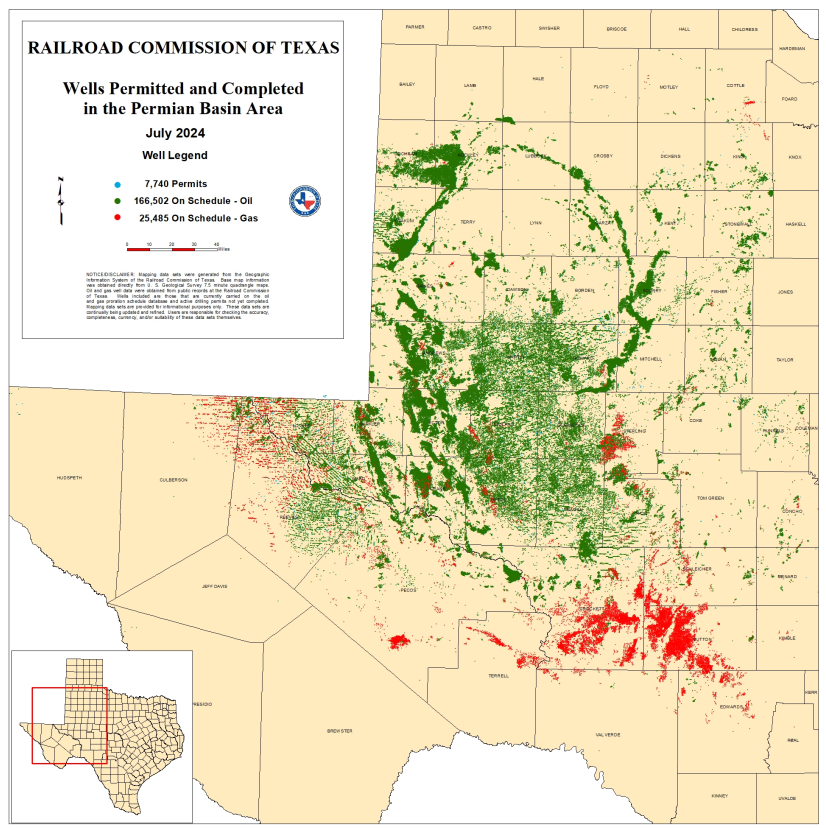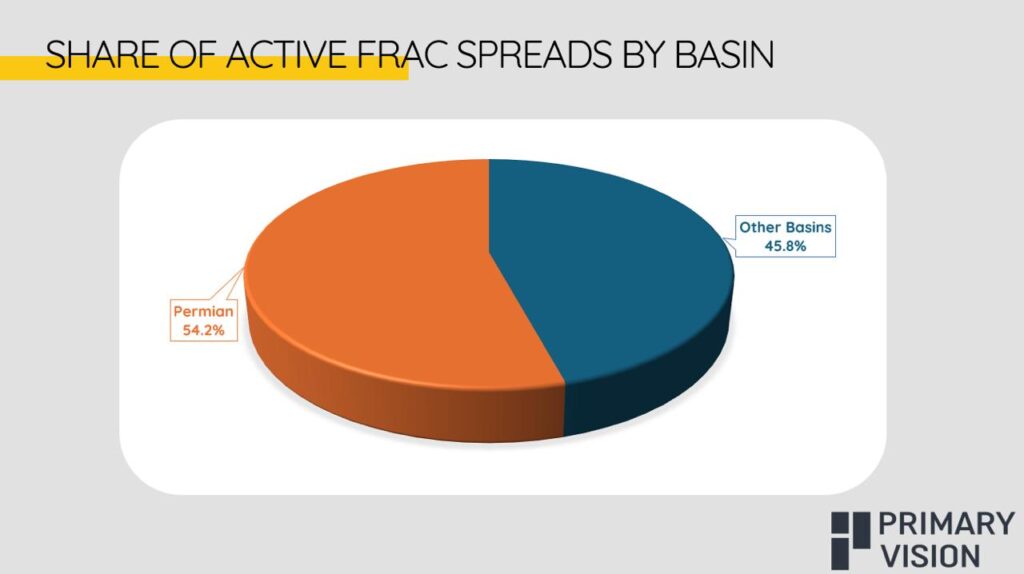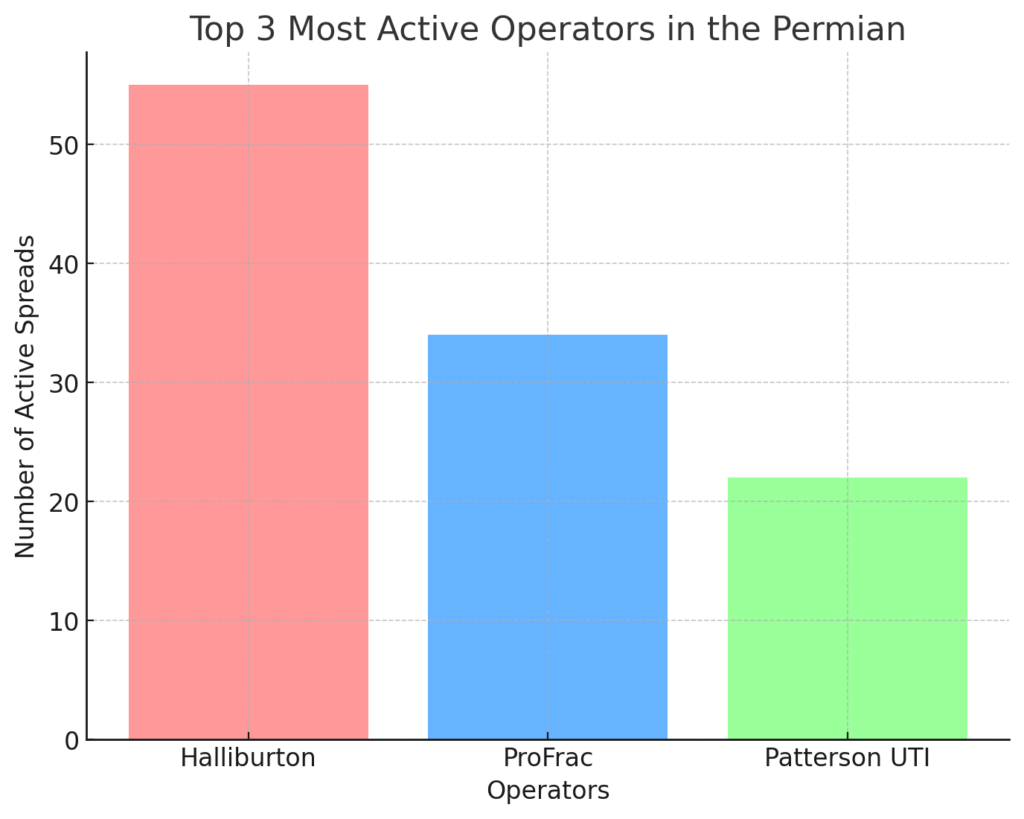The Permian Basin is the powerhouse of the U.S. oil and gas industry, standing as a critical driver of domestic and global energy production. Spanning approximately 86,000 square miles across western Texas and southeastern New Mexico, this geological marvel continues to dominate headlines and the energy landscape alike. As of 2024, the region’s oil production surged to a record-breaking 6.3 million barrels per day, contributing nearly half of the nation’s crude oil output. Beyond crude, the Permian also plays a significant role in producing natural gas, underscoring its importance not only for U.S. energy security but also for meeting the growing demand for liquefied natural gas (LNG) exports. Its vast reserves, advanced infrastructure, and high production rates make it the focal point for operators and service providers in the oilfield sector.

Primary Vision’s latest data highlights the Permian’s dominance, with 129 active frac spreads currently operating in the region. This represents 54% of the total U.S. fracking activity, a staggering proportion that highlights the basin’s unparalleled importance. A frac spread, comprising high-powered pumps, blenders, and the crew required for hydraulic fracturing, is a vital unit in bringing wells online. This concentration of activity in the Permian underscores not only the basin’s resource richness but also the strategic focus of operators prioritizing the region for its favorable economics and potential for high returns.

Further analysis of Primary Vision’s Frac Supply puts Permian’s operational intensity into perspective. Leading the charge is Halliburton, with an impressive 55 active spreads, making it the undisputed leader in the basin. This dominant position reflects Halliburton’s ability to handle high-volume operations and its established relationships with major operators. Following closely behind is ProFrac, with 34 active spreads, demonstrating its growing influence and operational efficiency. Patterson UTI, with 22 active spreads, also stands out as a key player, leveraging its balanced approach to meeting operator demands while maintaining scalability. These three companies collectively account for a substantial portion of the Permian’s activity, showcasing their strategic investments and their role in shaping the basin’s competitive landscape.

Let’s compare Permian Basin to other major shale plays in the United States using our data bank. The disparity in activity becomes even more striking. The Western Gulf region, which includes the Eagle Ford Shale, hosts 23 active spreads, far behind the Permian in terms of scale and intensity. Similarly, the Appalachian Basin, home to the Marcellus and Utica shales, operates 25 active spreads, primarily focused on natural gas production rather than crude oil. Meanwhile, the Williston Basin, known for its Bakken formation, has 17 active spreads, reflecting its smaller contribution to overall U.S. production. These comparisons underscore the Permian’s unique position as the most prolific and active shale basin in the country. Its ability to attract such a high concentration of frac spreads speaks to its superior resource base, well-developed infrastructure, and lower breakeven costs compared to other regions.

The Permian’s dominance is not just a product of geology but also a testament to the strategic focus of leading service providers and operators. Halliburton’s commanding lead, ProFrac’s growing presence, and Patterson UTI’s balanced strategy all highlight the basin’s role as a critical battleground for market share and technological advancement. While other basins play important roles in diversifying U.S. energy output, the Permian continues to set the standard, shaping the future of hydraulic fracturing and energy production in the United States.

The Permian Basin remains the epicenter of U.S. fracking activity, with its 129 active frac spreads driving both production and innovation. The region’s dominance is a reflection of its unparalleled resources, strong operator focus, and the strategic decisions of key service providers. As the energy landscape evolves, the Permian is poised to maintain its leadership, continuing to fuel the industry and the broader economy. Its central role in shaping U.S. energy policy, meeting global demand, and advancing fracking technology ensures that it will remain the focus of attention for years to come.













